At the end of 2011, the news of SAAB’s bankruptcy shocked the entire automotive industry. How did this auto brand that has experienced more than 60 years of development go step by step? When was it most brilliant? How did it come to these titles of “Man and car in one, ground flight” and “King of front drive”?

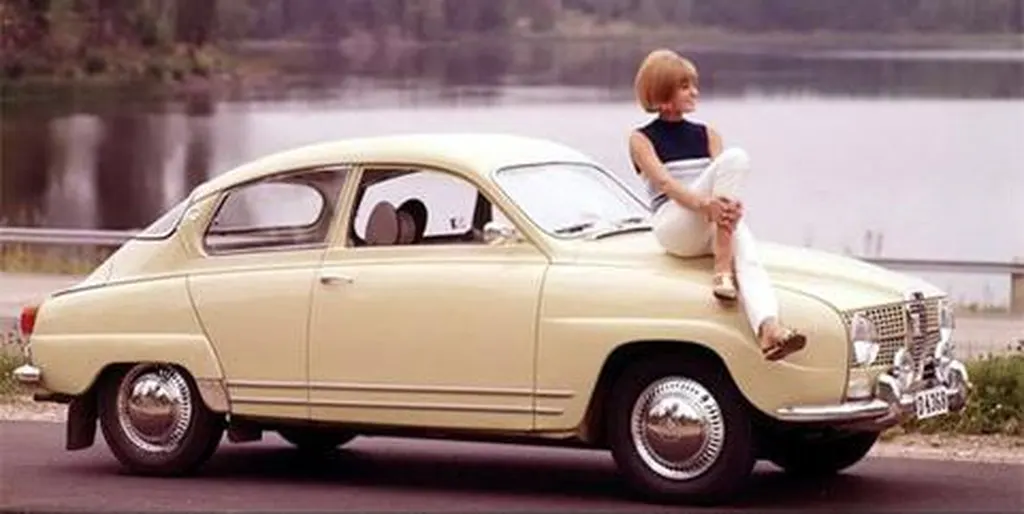
● The establishment of the SAAB automobile brand and the birth of the first model (1937-1947)
Originating from Aircraft Company / Destined to be Different
The full name of SAAB is Svenska Aeroplan Aktiebolaget, which was established in Sweden in 1937. At that time, the company mainly provided the Swedish Air Force with the aircraft and protected Sweden’s neutral position in World War II. And as the war ended and the fighter market shrank, the company began to look for new and diverse markets.





In 1944, through analysis of the situation, SAAB decided to transform its aircraft production line and start producing cars. This historic decision has created a world-renowned car brand. In early 1946, the design of SAAB’s first car, Saab 92.001, was completed. At that time, SAAB sent a development team of 15 aircraft engineers. Sixten Sason, one of the members, outlined the first prototype of SAAB 92.001, and used this design to become one of Sweden’s most outstanding industrial designers. In April 1946, the SAAB 92.001 prototype began to enter the test phase in Trollhattan, Sweden, and was ready to start in November. On June 10, 1947, SAAB 92.002, the first production car, was officially made public.
● The era of independent SAAB automobile companies (1948-1968)
Fast development period: The birth of classic models such as SAAB 93, laying the brand’s positioning in sports, safety and technology
Although SAAB 92.002 was officially released in 1947, due to conditions, the original Saab 92 was produced synchronously with the aircraft at the plant that produced the Saab 91 aircraft. It wasn’t until 1949 that Saab began mass production of cars. Since 1950, SAAB has been seen on the streets of Sweden. At the same time, SAAB also began exporting cars to Scandinavia in exchange for raw materials and various equipment.

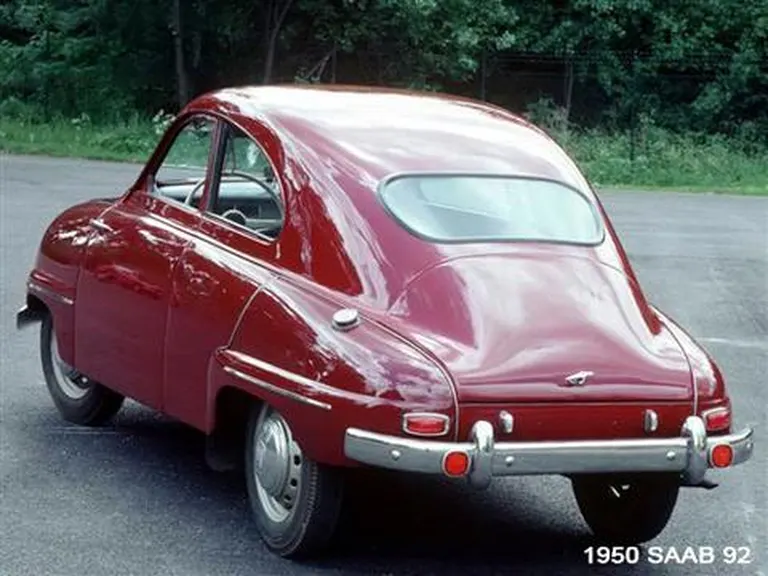
SAAB’s first 92 model is powered by a 2-cylinder 2-stroke engine with a displacement of 0.75 liters, a maximum power of 25 hp, a maximum speed of 105 km / h, front-wheel drive, and a 3-speed manual transmission matching the engine. The most important thing is that because SAAB has previous experience in manufacturing aircraft, the aerodynamic design was considered in detail on this model, so that the wind resistance coefficient of this car is only 0.3, which is better than many cars today. And this aerodynamic design concept also runs through the entire SAAB car development, laying the foundation for the image of the SAAB sports brand. The first SAAB 92 was discontinued in 1955, with more than 20,000 units sold.


Since the first SAAB 92 car was successfully sold, SAAB has quickly launched new models in the following 20 years. Although most of these models were built on the SAAB 92 platform, they each have their own characteristics, and It has basically completed its car product structure in the late 1960s.



In 1955, SAAB 93, a replacement model of SAAB 92, was launched. SAAB 93 was completely redesigned, with a radical change in appearance, new head grille, the use of three-cylinder engines and tubeless tires. Its 748cc displacement 3-cylinder engine can produce 33 horsepower output, and even became SAAB’s leading model.

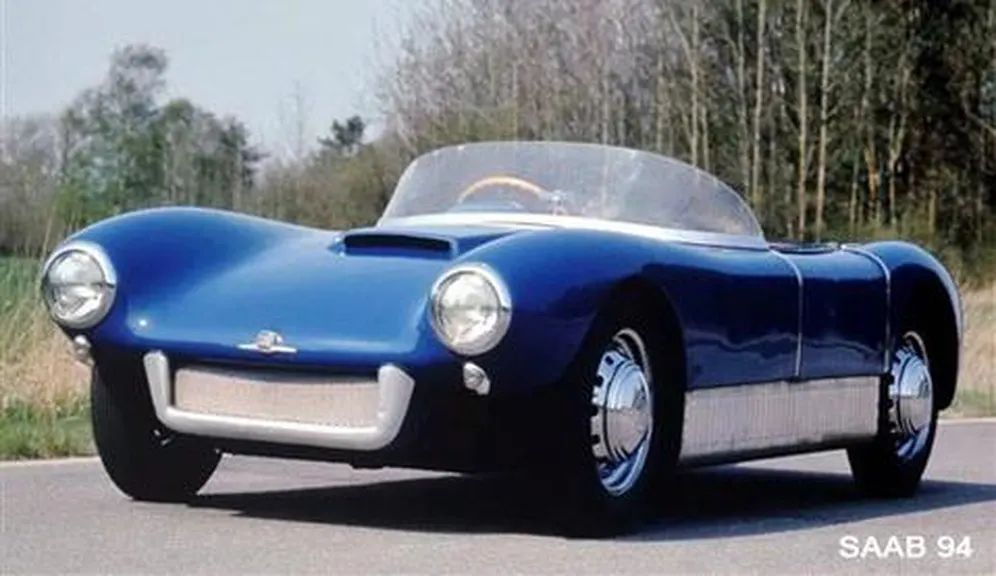
Perhaps rooted in the blood of the Nordic nations, SAAB could not resist the temptation to create a sports car. By 1956, SAAB’s first sports car SAAB Sonett I (SAAB 94) was launched, with convertible two-seater, and the engine was equipped with a 57 horsepower three Cylinder two-stroke engine, with a top speed of 190 km / h. A total of 6 models of this model have been produced, of which 5 are still in existence and 2 are kept in the SAAB Museum.
SAAB ’s explosive sales growth in history began in 1957. In that year, SAAB sold 14,100 SAAB 93 models, and the total vehicle output increased 14%. By the end of 1959, 12,000 SAAB 93 models traveled across the ocean to the United States, and the United States became SAAB’s largest overseas export market.

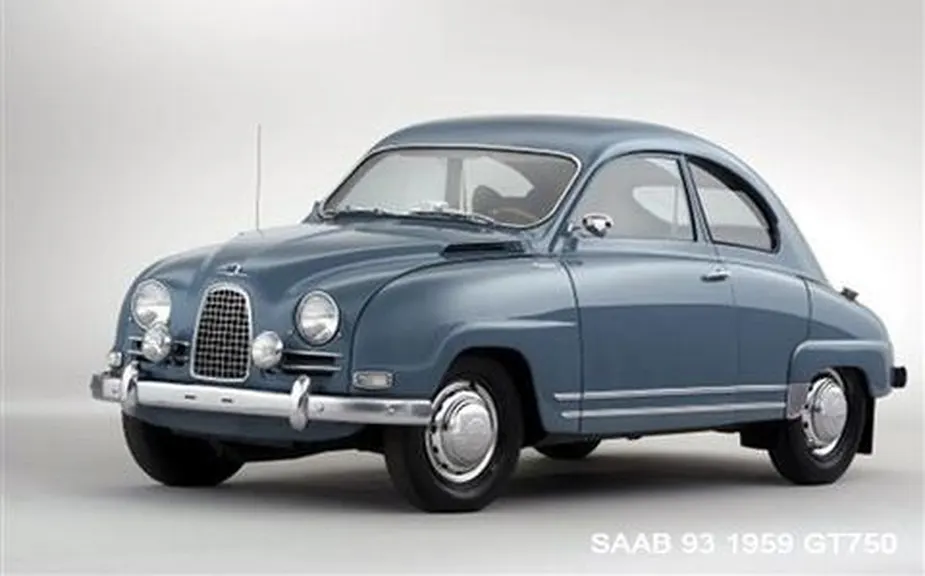
In 1958, a model called SAAB 93 GT750 was launched. This model was built to celebrate SAAB’s victory in Monte Carlo racing, mainly for the US market. In 1959, SAAB 95 was launched, which is the travel version of SAAB 93 . This station wagon uses a unique foldable third-row seat design, making this new car a veritable 7-seater.


In 1960, SAAB’s other model SAAB 96 officially met consumers. Initially it was equipped with a 0.75-liter three-cylinder engine with a maximum power of 38 horsepower. In 1963, 0.75-liter three-cylinder engine replaced by the 0.8L engine with the maximum power of 40 horsepower, while front wheel disc brakes and seat belts became standard equipment for Saab. It was this model that dominated most of SAAB’s sales market in the 1960s. It sold nearly 550,000 units in the 20 years of the late 1960s and 1970s.

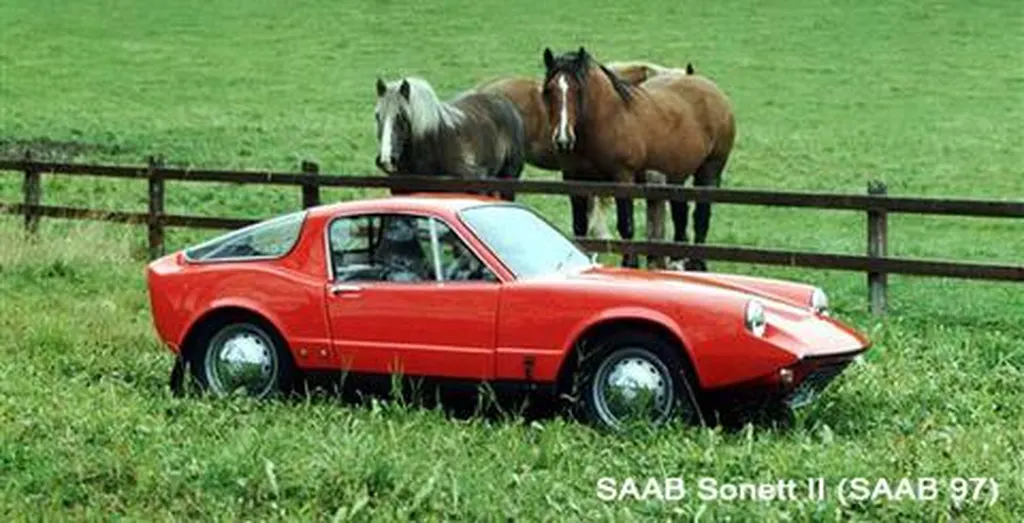
In 1966, SAAB Sonett II (SAAB97) was officially launched. The original production of the Sonett II is still equipped with the previous 2-stroke engine, but the two-stroke engine is not popular in the US market and cannot meet US emission standards. So in 1967, it was replaced by Ford’s 1.5L v4 engine. At the same time, the 95, 96 and other models were also equipped with Ford’s 1.5L v4 engine. This engine can produce a maximum power of 65 horsepower. And on the second-generation Sonett, SAAB also used glass fiber and a lightweight chassis, making the car 0-100 km / h acceleration time is only 12.5 seconds.


In 1968, the new SAAB 99 was launched. This model was the flagship model of SAAB at that time, and this model was the first model completely separated from the Saab 92 platform since the creation of the Saab brand. For this model, an inline 4-cylinder engine with a displacement of 1.75L appeared for the first time, with a maximum power of 95 horsepower. And on this model also adopted many new equipment, including self-healing front bumper, headlight wipers, side impact beams and so on. The launch of this model also laid the foundation for safety and technology for SAAB.
In the past 20 years of the development of the entire SAAB independent company, it can be said that SAAB has completed the rapid development process from scratch, from Sweden to overseas. At that time, SAAB had achieved very good achievements in both sales and racing, and basically set the main style for the future development of SAAB models: sports, safety and technology.
● SAAB-Scania Automobile Age (1969-1989)
The most glorious period: Turbo technology has become a brand label, and new car sales have skyrocketed
In 1969, SAAB Aircraft Corporation annexed Scania, a commercial vehicle manufacturer in Sweden, and merged SAAB Motors and Scania into an automotive group. Scania is Sweden ’s largest commercial vehicle manufacturer. It mainly manufactures trucks and buses, and also has a high reputation in the automotive industry. At this point, the era of the independent SAAB automobile company has officially ended, and it has entered the era of SAAB-Scania.

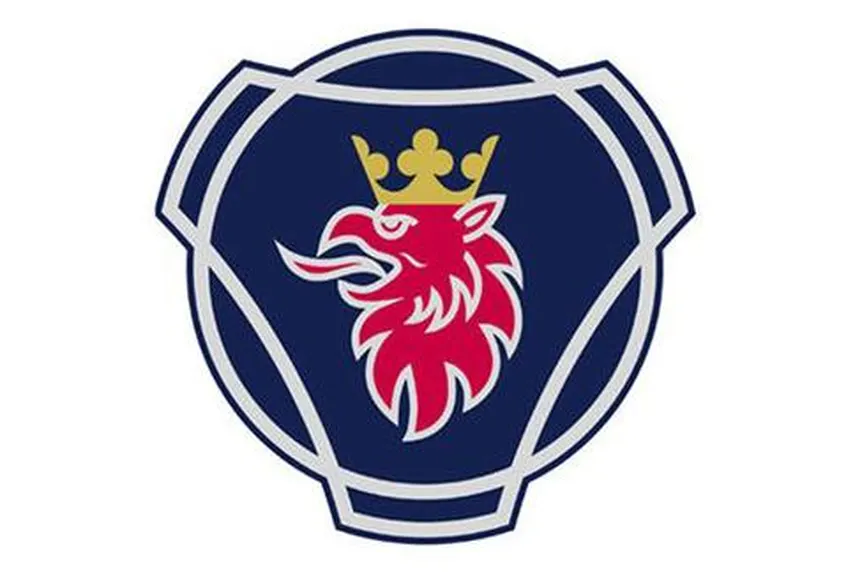

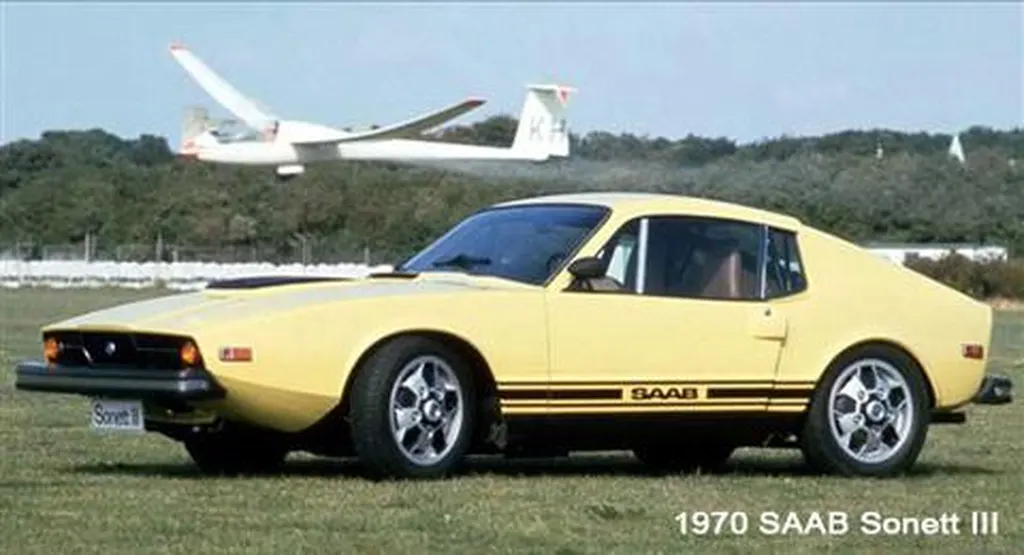
In 1970, the third generation of the SAAB Sonett III was launched. The design style of this model has been completely changed, and its appearance has become angular. Without the round lamp, it has become a hidden headlamps design, and the whole car more like an Italian sports car. The headlight cleaning system previously on the SAAB 99 model also appeared on this SAAB Sonett III. And for power, it is still equipped with Ford’s V4 engine. In 1970, SAAB’s total vehicle output also exceeded 500,000 units. However, following the outbreak of the global oil crisis in 1973, SAAB Sonett III, which was mainly sold to the US market, was forced to suspend production in 1974, and a total of 8,368 units were sold in this four years.

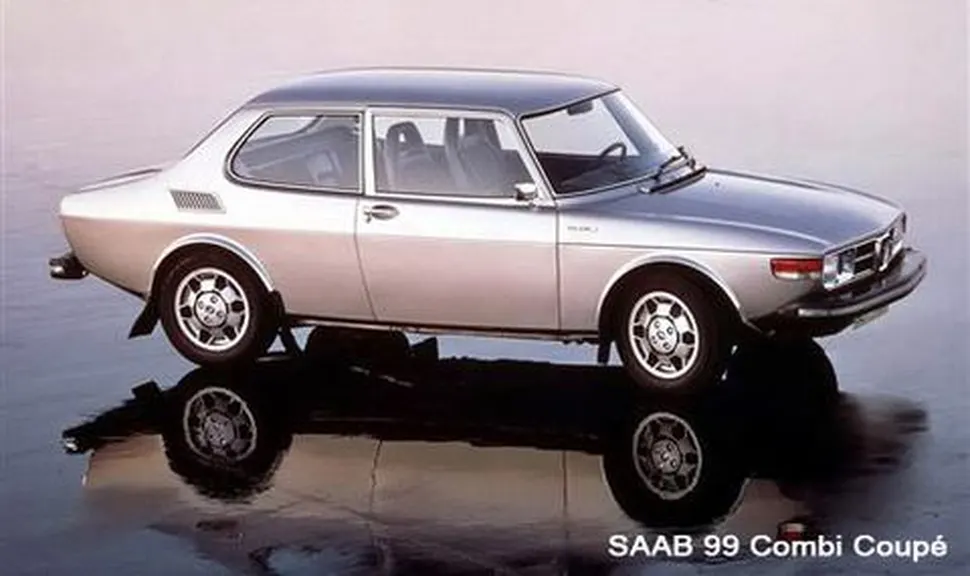
What happens if combine the practicality of a three-door hatchback with the glamorous look of a sports car? The answer is SAAB 99 Combi Coupé. In 1973, SAAB launched a hatchback model of the SAAB 99 Combi Coup. The emergence of the Combi concept set a new standard for SAAB’s design in the 70s and 80s, and also affected the original SAAB 9000 and the second generation SAAB 900 Design ideas. This model is 100mm longer than the normal sedan version. This model is also equipped with rear folding seats, front seat heating, headlight cleaning and other functions. Because this model took into account the practicality of the hatchback and the sporty appearance of the sports car, it achieved great success shortly after its launch and almost became a synonym for SAAB at the time. At the same time, the automatic repair of the bumper also won international safety award for the first time in that year.

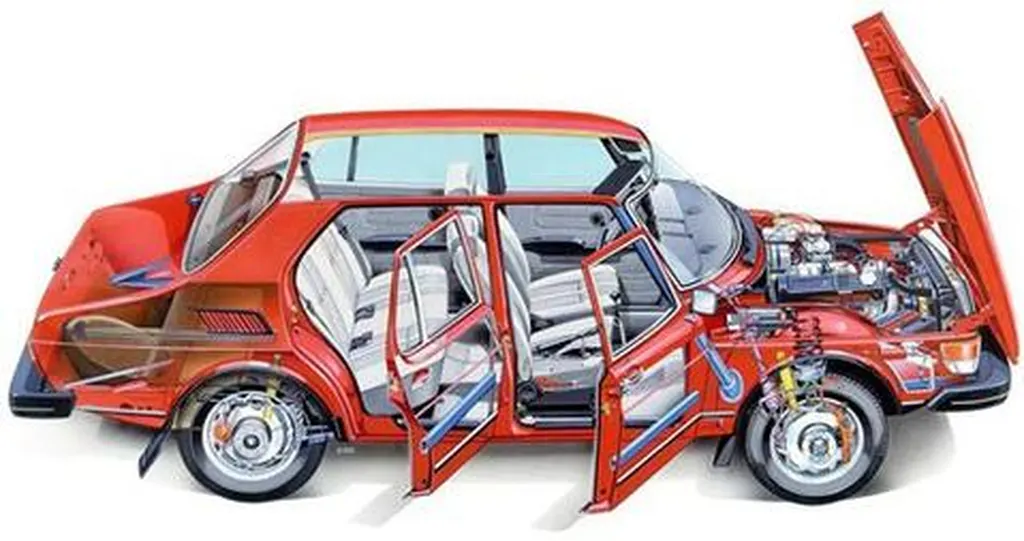
In 1976, turbocharging technology which can be said that a major technological breakthrough affecting the development of the entire automotive industry was first installed on SAAB 99 models. This 2.0T turbocharged engine can provide a maximum power of 145 horsepower. When mounted on the SAAB 99 model, the top speed can reach 200 km / h.
In fact, in the era of the oil crisis, many car manufacturers tried to overcome the problem of turbocharging, but all failed. Some manufacturers also claim that turbocharging technology will never be used to make production cars. The reason is that the instantaneous intervention of the turbine will generate huge pressure, which will cause damage to other components, and the ambient temperature of the turbine is very high, and the process requirements are also very demanding. However, SAAB engineer Per Gillbrand doesn’t think so. After troubleshooting, he developed a unique wastegate valve to divert the power that the engine does not need. As a result, SAAB’s four-cylinder turbocharged engine provides power comparable to V8 engine. A car equipped with a turbocharged engine can provide powerful torque and outstanding acceleration performance when overtaking.

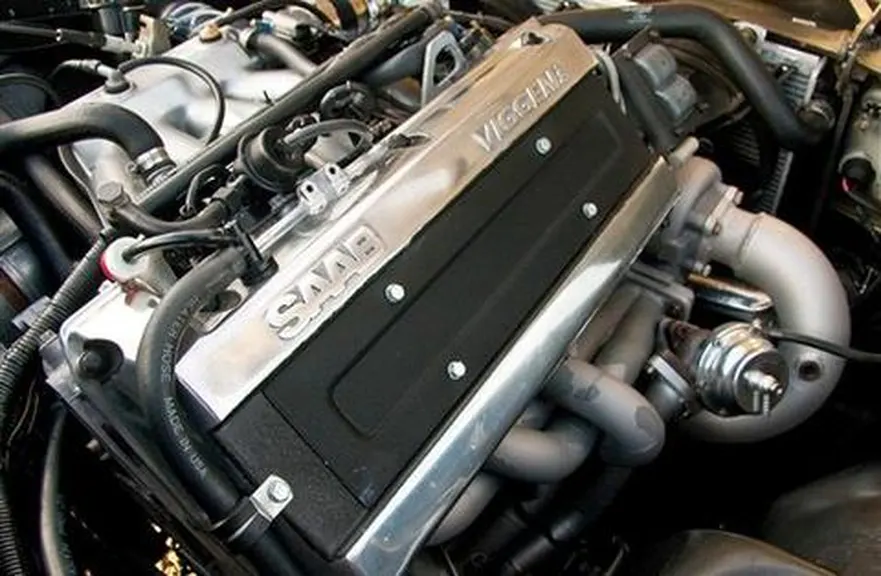
Although measured by today’s standards, the 2.0-litre engine output of 145 horsepower is not surprising, but in 1976, when the first turbocharged engine came out, its impact was absolutely sensational. Turbocharging technology has increased the engine’s maximum power by 23% and torque has increased by 45%. Under the influence of the high fuel prices caused by the first oil crisis in 1973, turbocharging technology is undoubtedly the right technology at the right time. It coincided with the prevailing trend of society at the time emphasizing fuel economy.
Although turbocharging technology was not invented by SAAB (this remarkable idea was proposed by Swiss engineer Alfred J. Büchi in 1905), it was the first automaker to widely apply this technology to road vehicles. Previously, turbocharging technology was only used in aviation, motorsport and commercial diesel engines.

